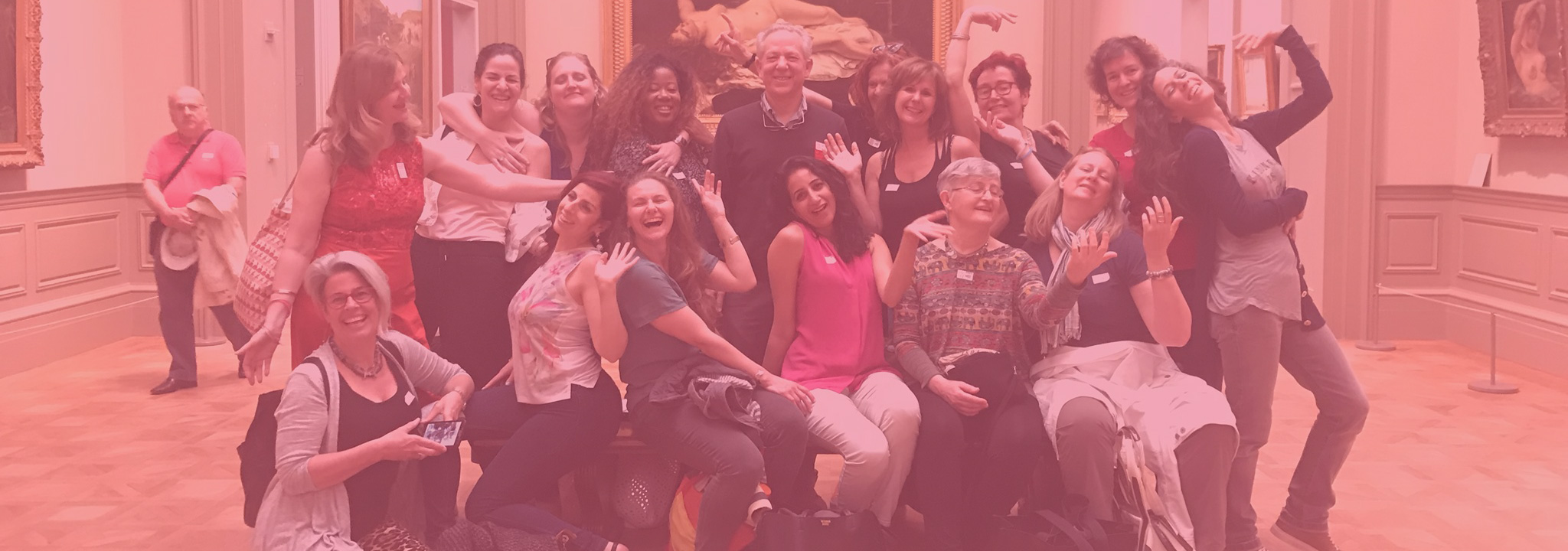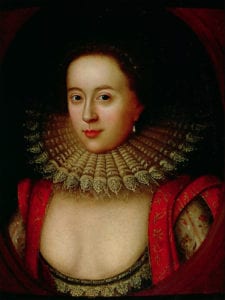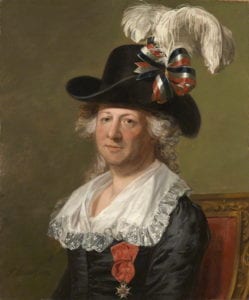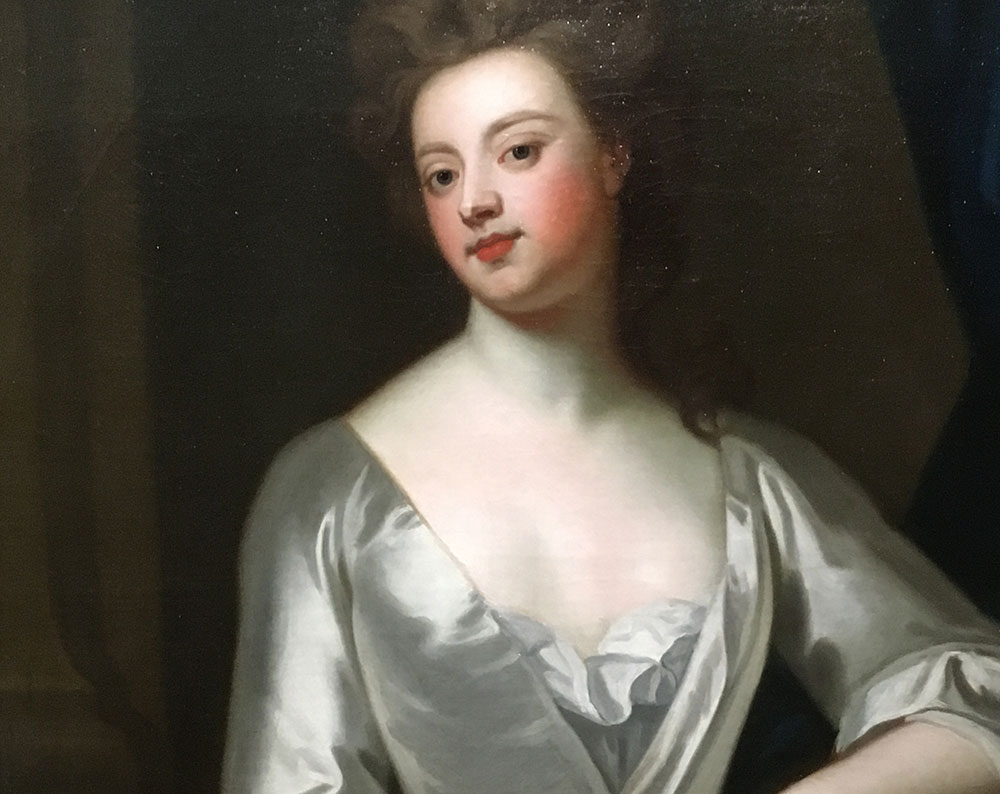
10 Dec Women of the National Portrait Gallery
London’s National Portrait Gallery has a great collection of portraits of famous and important people from British history. If you ask the general public what that means, they would tell you it’s a great place to see images of kings, queens, prime ministers, and other great people (mostly men). But actually, the National Portrait Gallery’s collection is much more fun than people realize. It contains a lot of portraits of people with really entertaining stories, and these stories often revolve around the one thing that can make historical people seem really relatable: love and sex. And many of the most interesting stories are about *women*.
[* Purchase Tickets To the Scandals & Secrets Tours of the National Portrait Gallery of London *]
One of the great examples is Frances Howard, Countess of Somerset. Howard was married young (at 14) to Robert Devereux, 3rd Earl of Essex (who was 13). Essex was son and heir to Robert Devereux, the second Earl of Essex, who was Elizabeth I’s last “favorite,” i.e. possibly her lover, although 32 years her junior, and who ended his life by attempting to stage
a coup d’état and getting himself beheaded. In any case, the marriage was not consummated. Frances fell in love with Robert Carr, Earl of Somerset, instead—favorite and quite certainly the lover of James I. In order to marry Carr, she sued to have her marriage to Essex annulled, on the grounds that Essex was impotent. Just to give you an idea of how these people behaved, Essex apparently proved to his friends that this was not true by lifting his night shirt and showing them his erection! But he admitted that he could not have sex with his wife, because, he said, she called him foul names. Carr’s closest advisor, Sir Thomas Overbury, was against the marriage, but the King was for it, so he had Overbury put in the Tower, where Frances arranged to have him poisoned. Accusations of poisoning are so common in the early Modern period (as in the Roman Empire) that they are generally worthless. After all, no-one knew why people died, and suspecting someone, especially a suspicious woman, of poisoning was easy. But in this case, she really did poison him. Indeed, by the time the case was over, a number of people had been convicted of helping her, and several, including the pharmacist, her maid, and the prison guard, were hanged. Somehow, however, the Earl and Countess survived and were eventually released from the Tower, presumably because James was still fond of Carr.
Charles II and his mistresses also provide some pretty good examples of misbehavior. Indeed, it’s already impressive that Charles is surrounded in the gallery by portraits of not only the Queen but three mistresses. Charles wanted to model his reign on that of his cousin Louis XIV, in France. And apparently maintaining something very like a harem was one of the points he wanted to imitate. My favorite of the portraits is this one of Barbara Villiers,
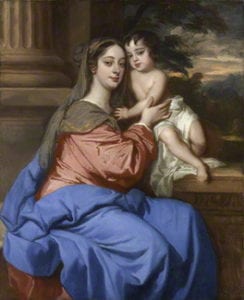
Barbara Palmer, née Villiers, Duchess of Cleveland, and child, probably Charles FitzRoy, by Peter Lely
Duchess of Cleveland. How many would have the guts to have themselves (or their mistress) portrayed as the Virgin Mary? But even in that small group, how many would have their illegitimate son portrayed as the baby Jesus? You have to be pretty irreverent to even think of it, let alone to do it.
But to conclude this little taster, I give you one of the few Frenchmen in the British portrait gallery, the Chevalier d’Eon. The Chevalier was a French soldier, spy, and diplomat, who, while they were serving in the embassy in London, let it be known that they were really a woman. This caused a huge furor, both in Paris and London, with, among other things, huge betting pools on the London Stock-exchange about the Chevalier’s sex. Eventually, they returned to France, where they became part of the chic circle around Marie Antoinette, who provided them the budget to buy women’s clothing (not a small amount in aristocratic 18th century France!). As you can see in the portrait, however, the Chevalier insisted on mixing it up even then, wearing their women’s clothing but insisting on also wearing the Cross of St Louis, France’s highest military honor, which the Chevalier had won earlier in their complicated gender history.
And there is plenty more to tell about the women of the National Portrait Gallery! As a cover image, I have used another great example, Sarah Churchill, ancestor of both Winston Churchill and Diana, Princess of Wales—and the favorite of Queen Anne, as we all know from the Oscar-winning film The Favourite, in which Sarah is played by actress Rachel Weisz. To find out more, come watch the live Zoom tour I am giving of the NPG on Saturday December 5 2020.



